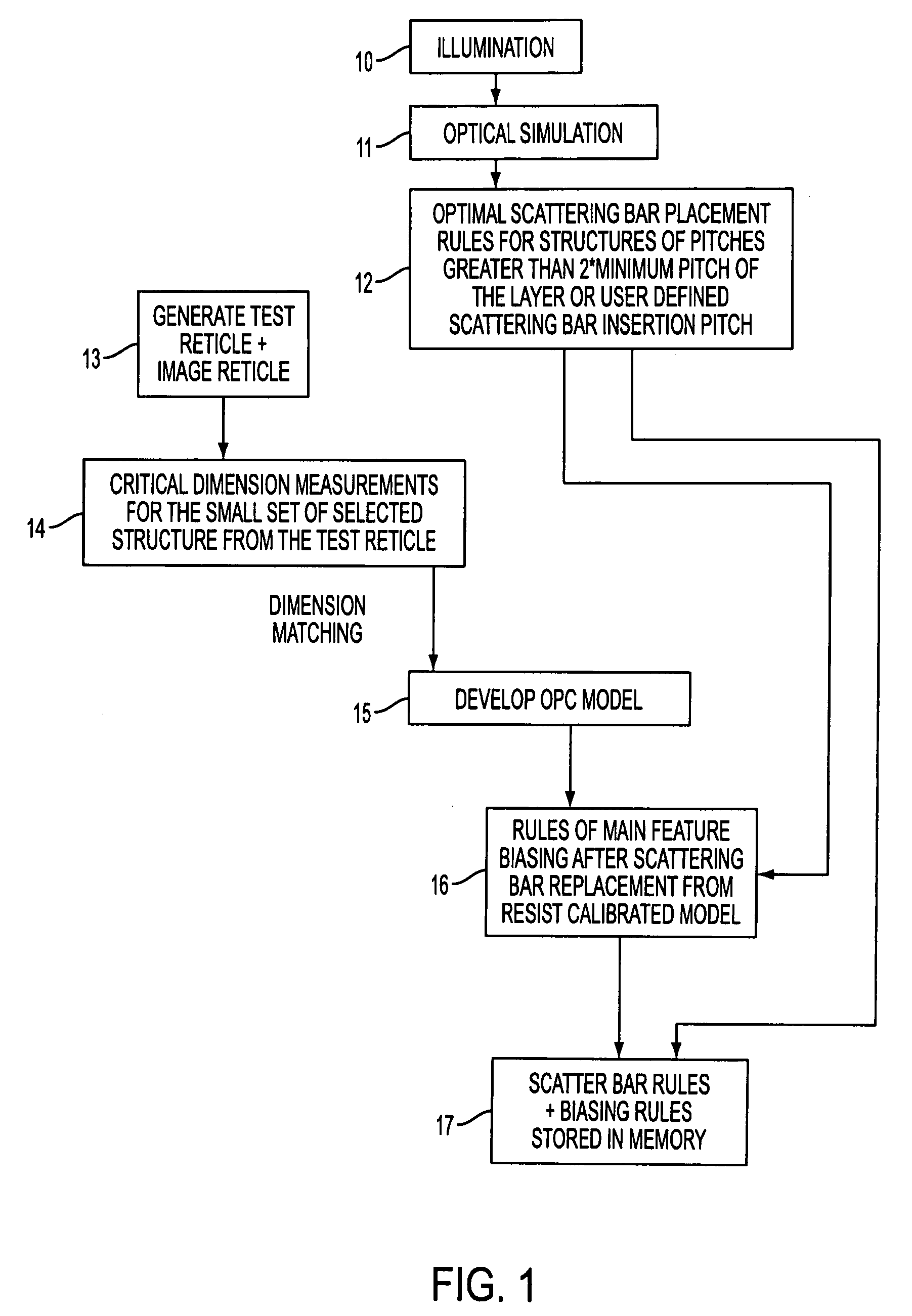Automatic optical proximity correction (OPC) rule generation
- Summary
- Abstract
- Description
- Claims
- Application Information
AI Technical Summary
Benefits of technology
Problems solved by technology
Method used
Image
Examples
Embodiment Construction
[0036]In accordance with the present invention, a method is disclosed for generating a set of rules (referred to as the OPC rule set) for automatically defining how a mask design should be modified to include OPC techniques for improving printing performance. Such OPC techniques, include, but are not limited to scatter bar assist features, feature biasing and serif placement. As explained below, once the OPC rule set has been generated for a given illumination setting, any reticle design can be automatically modified to include OPC techniques based on the OPC rule set. As such, there is no need to perform a trial and error placement for each mask design in order to modify the mask to include OPC techniques. However, a new OPC rule set needs to be generated each time the illumination setting or the resist process is changed.
[0037]FIG. 1 is a flow chart illustrating an exemplary embodiment of the method for generating the OPC rule set in accordance with the present invention. As an ov...
PUM
 Login to View More
Login to View More Abstract
Description
Claims
Application Information
 Login to View More
Login to View More - R&D
- Intellectual Property
- Life Sciences
- Materials
- Tech Scout
- Unparalleled Data Quality
- Higher Quality Content
- 60% Fewer Hallucinations
Browse by: Latest US Patents, China's latest patents, Technical Efficacy Thesaurus, Application Domain, Technology Topic, Popular Technical Reports.
© 2025 PatSnap. All rights reserved.Legal|Privacy policy|Modern Slavery Act Transparency Statement|Sitemap|About US| Contact US: help@patsnap.com



